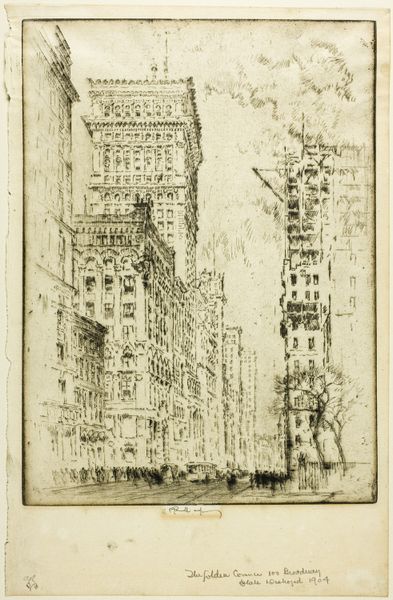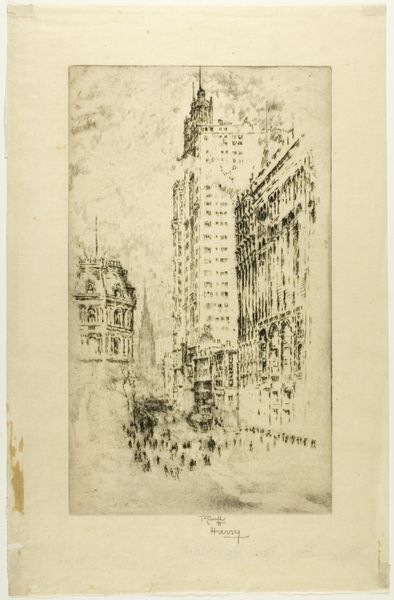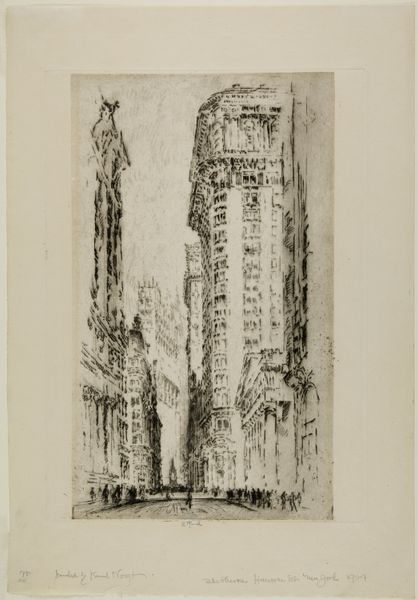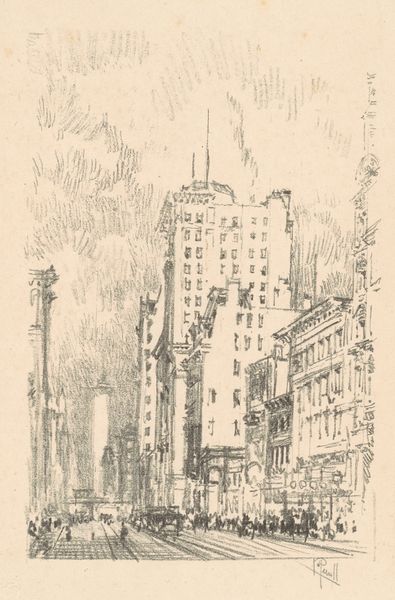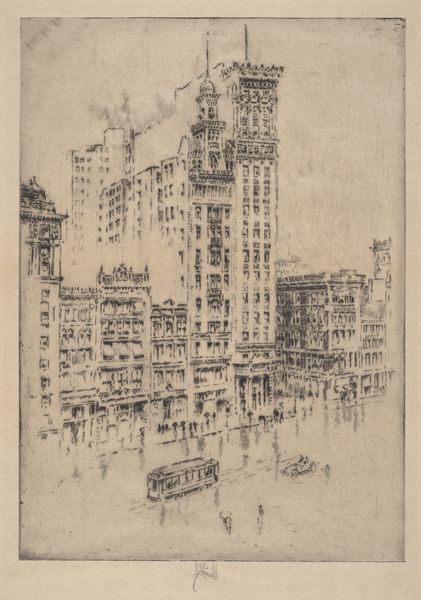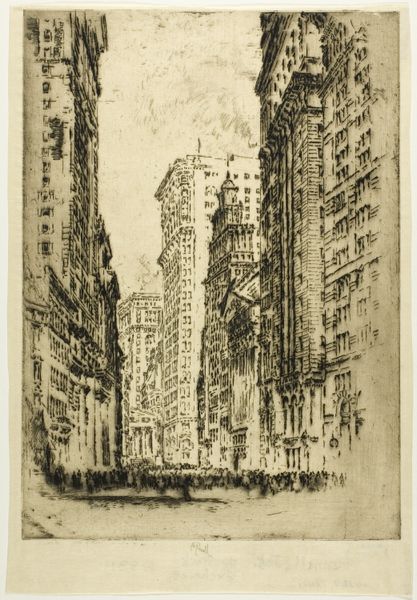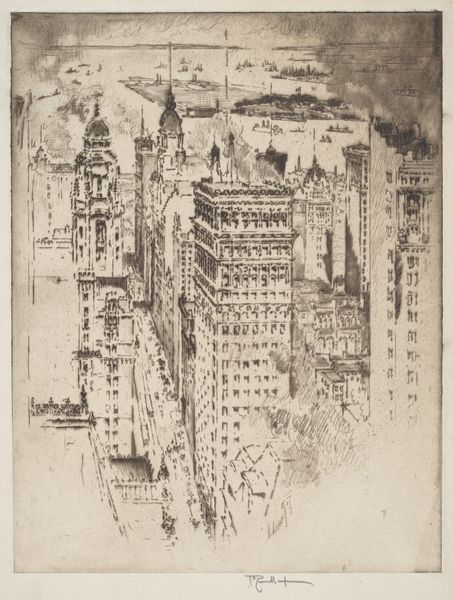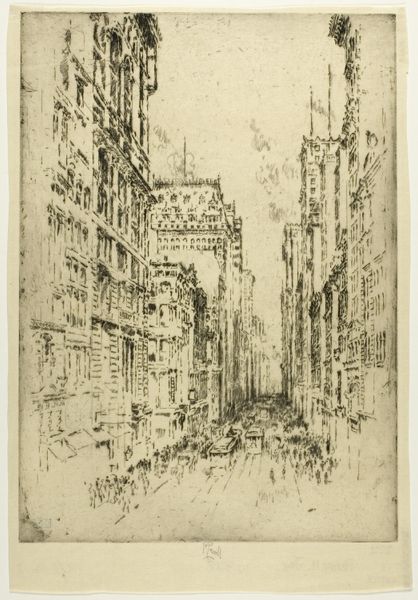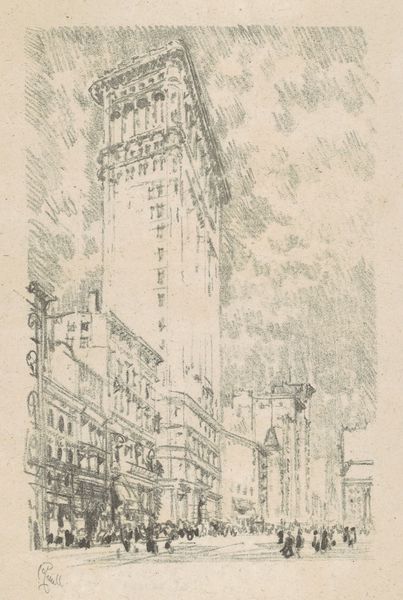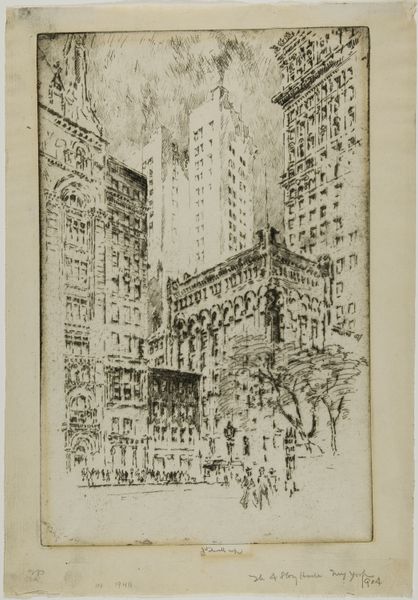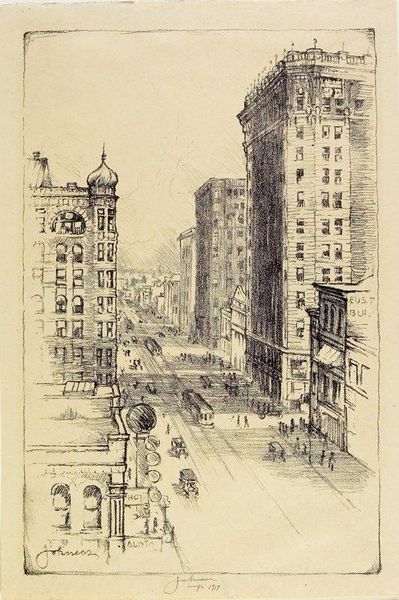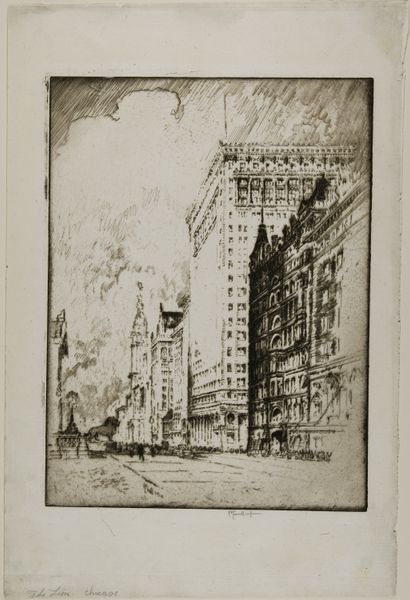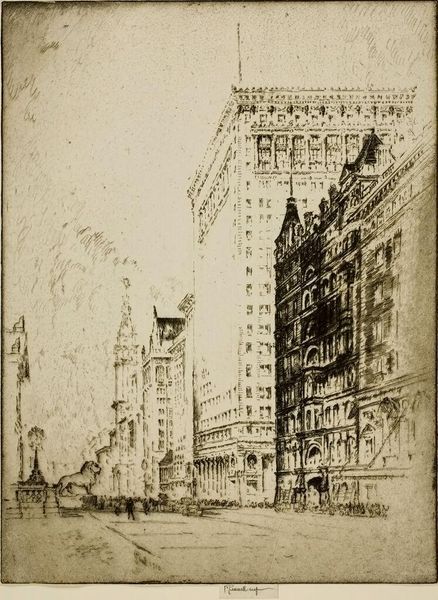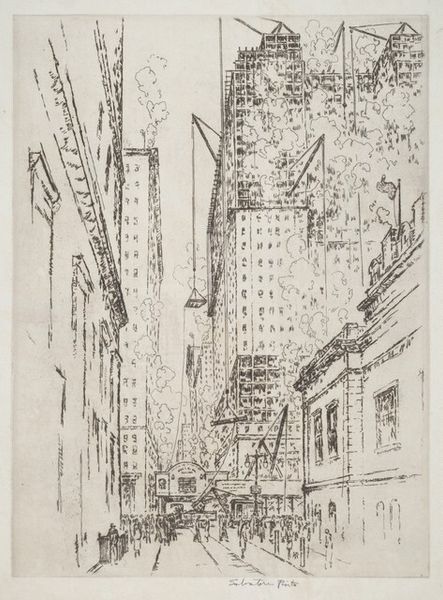
Dimensions: 271 × 183 mm (image); 310 × 196 (sheet)
Copyright: Public Domain
Editor: This is "The Golden Cornice, I," a 1904 etching by Joseph Pennell, currently residing here at the Art Institute of Chicago. It has an ethereal feel, capturing the city's vibrant movement. The towering buildings, the bustling streets. What do you see in this piece? Curator: I am immediately drawn to the interplay of light and shadow, achieved through the masterful use of line in the etching process. Notice how the density and direction of the lines define form and texture. It's a fascinating study in contrasts, wouldn't you agree? Editor: I see that. The buildings on the left seem solid, anchored by those darker lines, whereas the taller one on the right is more skeletal and transient, more suggested than defined. Curator: Precisely. Pennell has expertly employed the structural elements of line and form to convey a sense of both permanence and the dynamism of urban growth. How does the artist's chosen viewpoint impact your interpretation? Editor: I suppose it creates a kind of dramatic perspective, looking up at the monumental architecture makes the people below appear smaller, almost insignificant, against this architectural landscape. Curator: A shrewd observation. It is the composition which speaks volumes, and further accentuates this visual disparity. It directs our attention, guides us, revealing Pennell’s intention to highlight human presence as subservient to urbanity. Editor: It's fascinating how much can be gleaned just from the technique and composition alone. Curator: Indeed. By carefully examining the intrinsic qualities of the artwork, we can appreciate the sophisticated language Pennell uses to communicate his vision. Editor: This close analysis gives me a completely new appreciation for the artwork's intended meaning and expressive possibilities. Curator: Absolutely. There are ever new wonders to unlock within these creative choices.
Comments
No comments
Be the first to comment and join the conversation on the ultimate creative platform.
